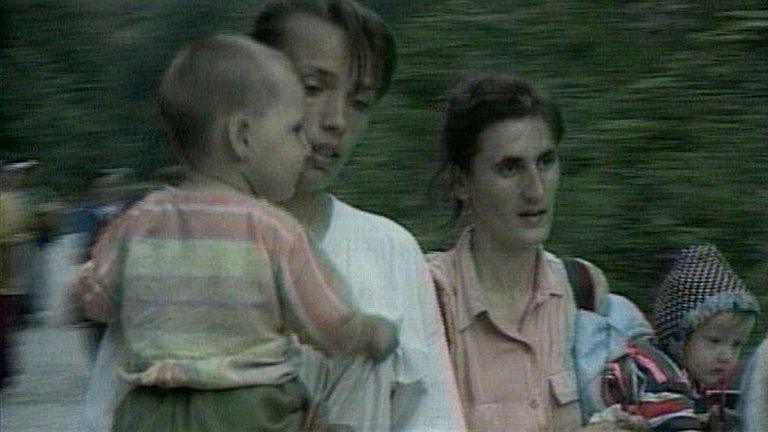Srebrenica residents try to move on from massacre
- Published
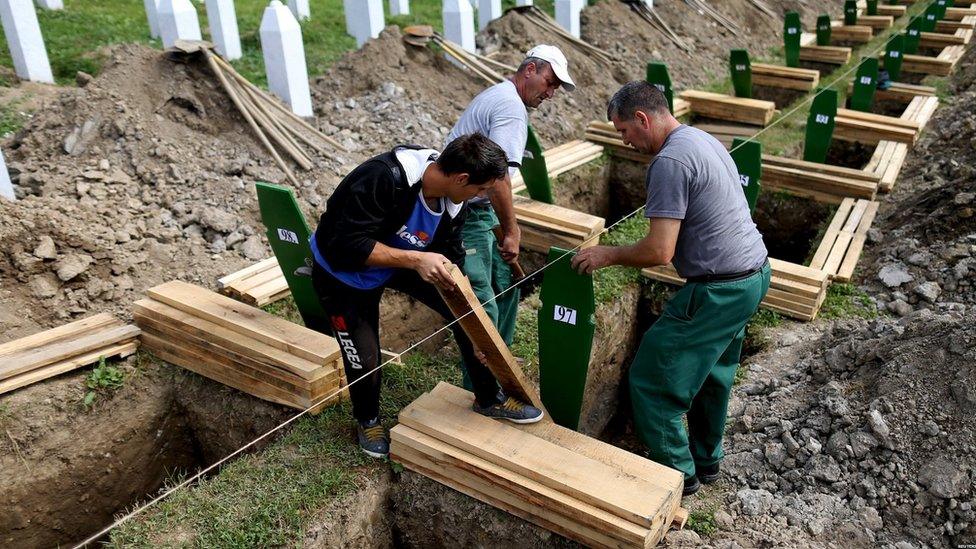
Burial sites for 136 newly-identified victims of the Srebenica massacre
For people in Srebrenica, it is tempting to feel that the town only exists for a few days a year - at least as far as the rest of the world is concerned.
The first indication that the season has started comes when the journalists roll in ("always the same questions," groans one resident) and bash at laptops in the hotel restaurant.
This restaurant overlooks a mosque and a church standing side-by-side in a town which, remarkably given its history, is more or less evenly ethnically mixed between Bosniaks (Bosnian Muslims) and ethnic Serbs.
Then, on 11 July, the dignitaries arrive, many by helicopter.
They pay their respects to more than 8,000 Bosniak men and boys murdered by Bosnian-Serb forces in 1995.
And then everyone departs - leaving the current residents of Srebrenica feeling less than impressed.
"We only have this attention during the commemoration - but those who live here have to stay here and deal with everyday issues," says Hasan Hasanovic.
Hasan Hasanovic is a survivor of the massacre and the Srebrenica Memorial Centre Curator
In a town full of heart-breaking stories, his is one of the most extraordinary.
He was 19 when General Ratko Mladic and his men brushed aside UN peacekeepers and moved into the supposed safe haven of Srebrenica.
He fled for his life into the forest near the town, along with his father and twin brother.
Hasan was the only one of the three to make it to safety.
He returned to Srebrenica 10 years ago to become a curator at the memorial centre at Potocari Cemetery and help organise the annual march for peace that precedes the commemorations. But he says the focus on the past is damaging for those who now live in the town.
"The whole world should show that there is life here after the deaths. We need to persuade people to invest here and have their future here, especially the young people. If young people leave, Srebrenica will die. So my question is - does the world want Srebrenica to die again?"
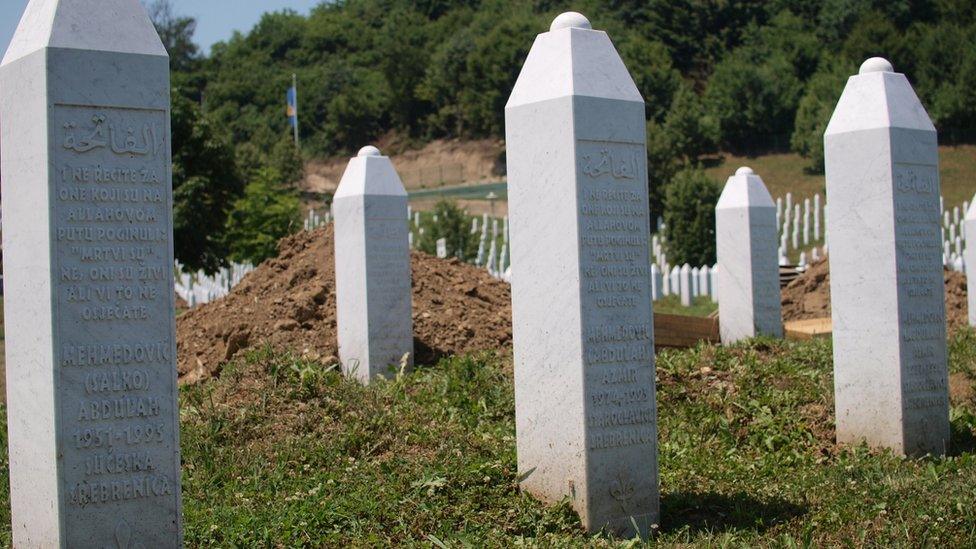
The town lost 8,000 men and boys
In many ways the problems faced by Srebrenica's young people are no different to those in the rest of Bosnia.
Youth unemployment rates are among the worst in Europe - fewer than four in 10 can find a job. But the town's grim past continues to be an additional drag on people who were born after the conflict.
"The world looks on us with eyes from 1992 - that's not good," says Nihad Kadic, the founder of Silver Media, a Srebrenica-based web-design and social media company.
In an effort to project a different view of the town - not least to its own residents - Mr Kadic started the eSrebrenica web portal with his colleague Mladen Kojic.
"We want to send positive stories from Srebrenica," he says. "We have a lot of support from the local community. We feature stories about the football club, famous people connected to Srebrenica and tourism. We want to show people that Srebrenica is about more than genocide."
There is even a reconciliation story at the heart of eSrebrencia - Mr Kadic is Bosniak while Mr Kojic is a Serb - though the founders are keen to downplay that angle.
"We work normally," says Mr Kadic. "If we have jobs we can live together."
Seeking a 'normal future'
In an effort to give the youth of the town a platform, Mr Kojic made 100 short films asking young people about their concerns.
"Regardless of ethnicity, the answers were the same," he says. "They were worried about a lack of jobs, political interference and the passivity of young people. And everyone wants a normal state with a normal future."
That hardly looks likely, with Bosnia divided since 1995 into two "ethnic entities". The system of government is not just mind-boggling - there are 14 prime ministers and three presidents - but notoriously ineffective.
The sole sliver of hope is that the revival of a Stabilisation and Association Agreement with the European Union will act as a carrot for the country's leaders to make much-needed economic, social and judicial reforms.
The EU's Special Representative in Bosnia, Lars-Gunnar Wigemark, insists the politicians have little choice but to work together.
"We should be talking about where we see Bosnia 20 years from now, rather than 20 years ago," he says.
But in Srebrenica, many people simply cannot escape from the past.
In Potocari Cemetery, Hatidza Mehmedovic says prayers over the graves of her husband and two sons, then expresses her concern that politicians of all ethnicities are profiting from perpetuating the damaging divisions in the country.
"They killed my progeny... I don't have a future anymore"
"We can't turn time back," she says. "But we haven't learned from the past. The children of Bosnia should know the truth - but they haven't been taught it."
Before the conflict, Srebrenica was a town of almost 40,000 people. Now barely a fifth of that number live here. If the population dwindles much further, the dead in Potocari Cemetery may soon outnumber the living.
A common sentiment among Bosniaks is that the international community abandoned Srebrenica in 1995.
Now citizens of both ethnicities say they need more than a yearly outpouring of grief from the countries that call themselves Bosnia's partners.
- Published9 July 2015

- Published8 July 2015
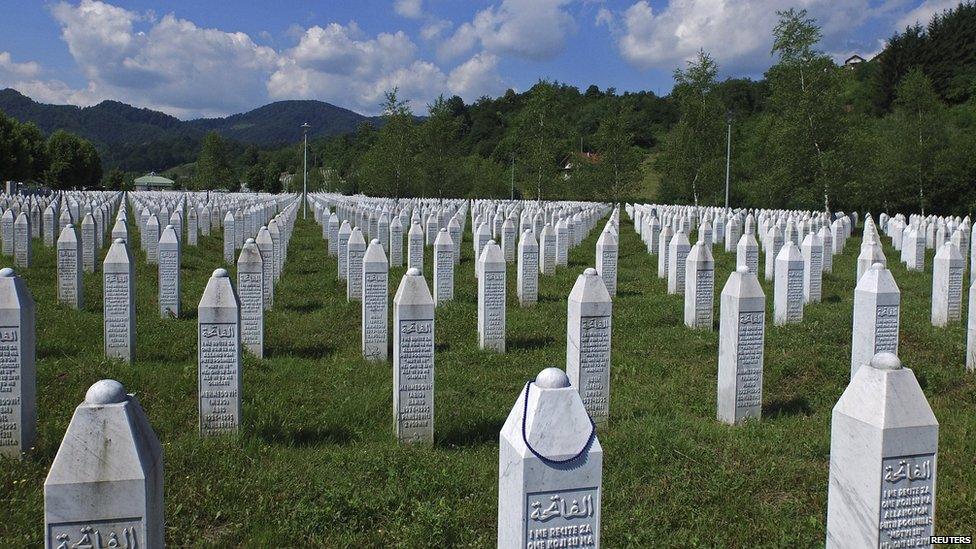
- Published6 April 2012
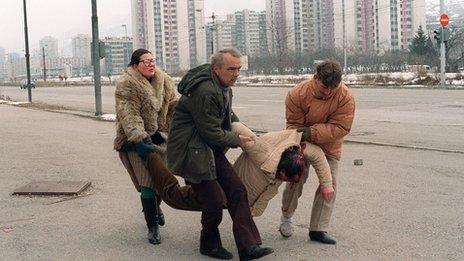
- Published17 May 2012
